문제
- ESET PROTECT On-Prem에서 해시 값을 기준으로 잠재적으로 원치 않는 애플리케이션(PUA)을 제외하는 정책을 만듭니다
솔루션
-
PUA를 이미 탐지한 클라이언트 시스템에서 ESET 엔드포인트 제품을 열고 도구 → 검역을 클릭합니다. PUA가 검역소 목록에 나열되어 있는지 확인합니다.
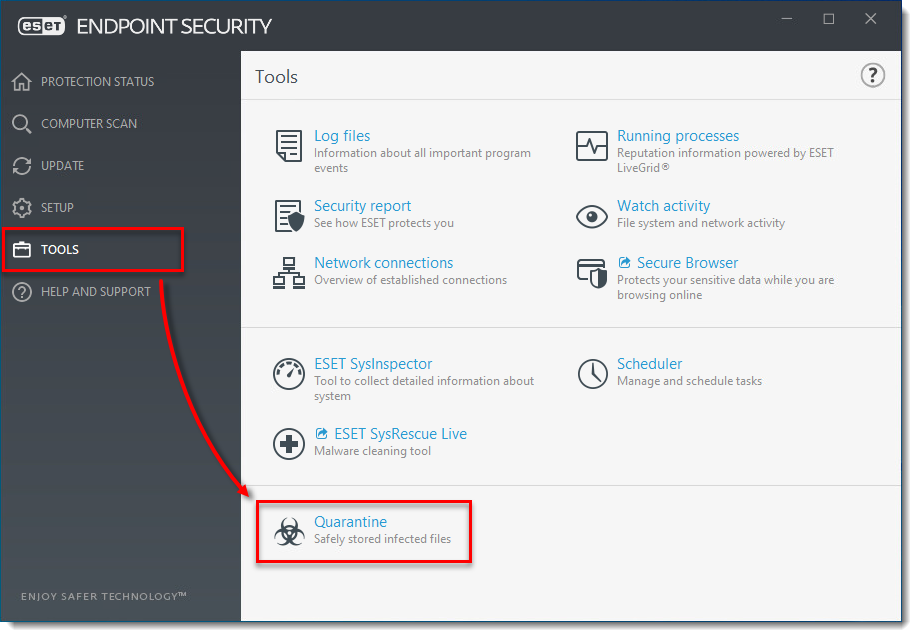
그림 1-1
이미지를 클릭하면 새 창에서 크게 볼 수 있습니다 -
#@#플레이스홀더 id='1499' 언어='1'#@#
-
자세히 보기 → 검역을 클릭합니다. 클라이언트 컴퓨터에서 발견된 PUA가 검역 목록에 나열되어 있는지 확인합니다.
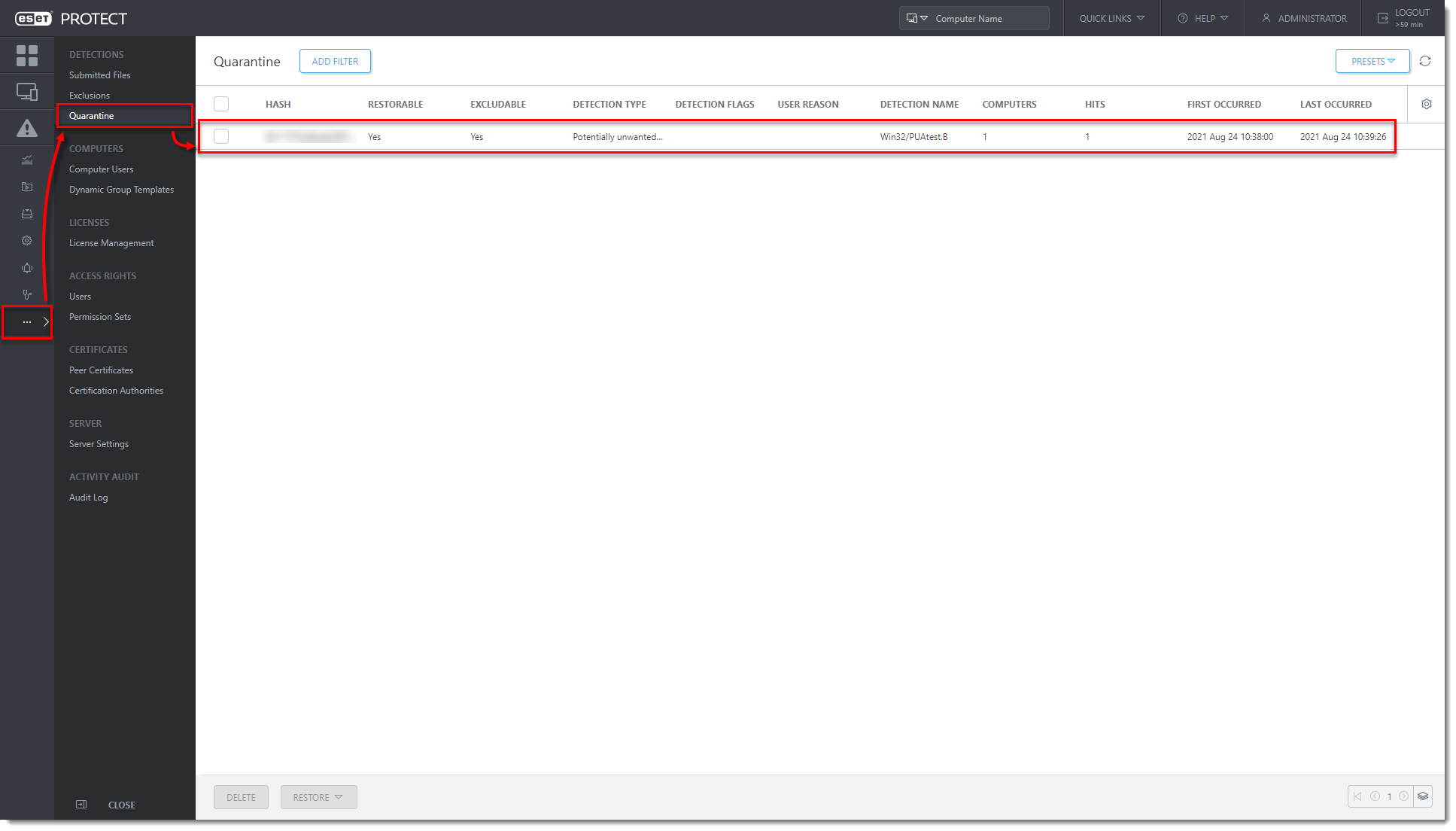
그림 1-2
이미지를 클릭하면 새 창에서 크게 볼 수 있습니다 -
작업 → 클라이언트 작업 → ESET 보안 제품 → 검역소 관리 → 새로 만들기 → 클라이언트 작업을 누르십시오.
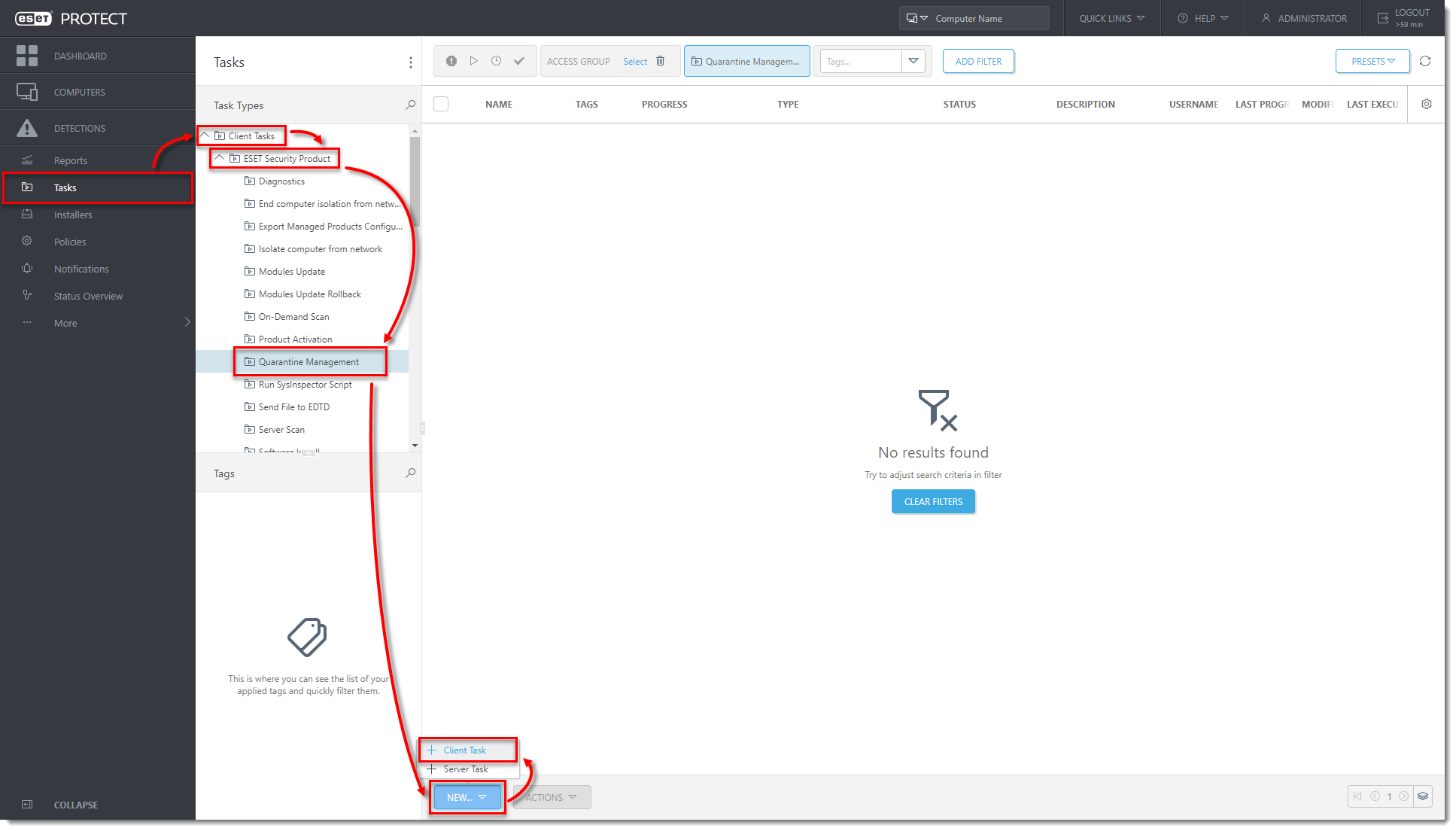
그림 1-3
이미지를 클릭하면 새 창에서 크게 볼 수 있습니다 -
기본 섹션에서 작업의 이름을 입력합니다. 설정을 누르고 동작 드롭다운 메뉴에서 개체 복원 및 향후 제외를 선택합니다. 필터 유형 드롭다운 메뉴에서 해시 항목을 선택합니다. 해시 항목 섹션에서 추가를 클릭합니다 .
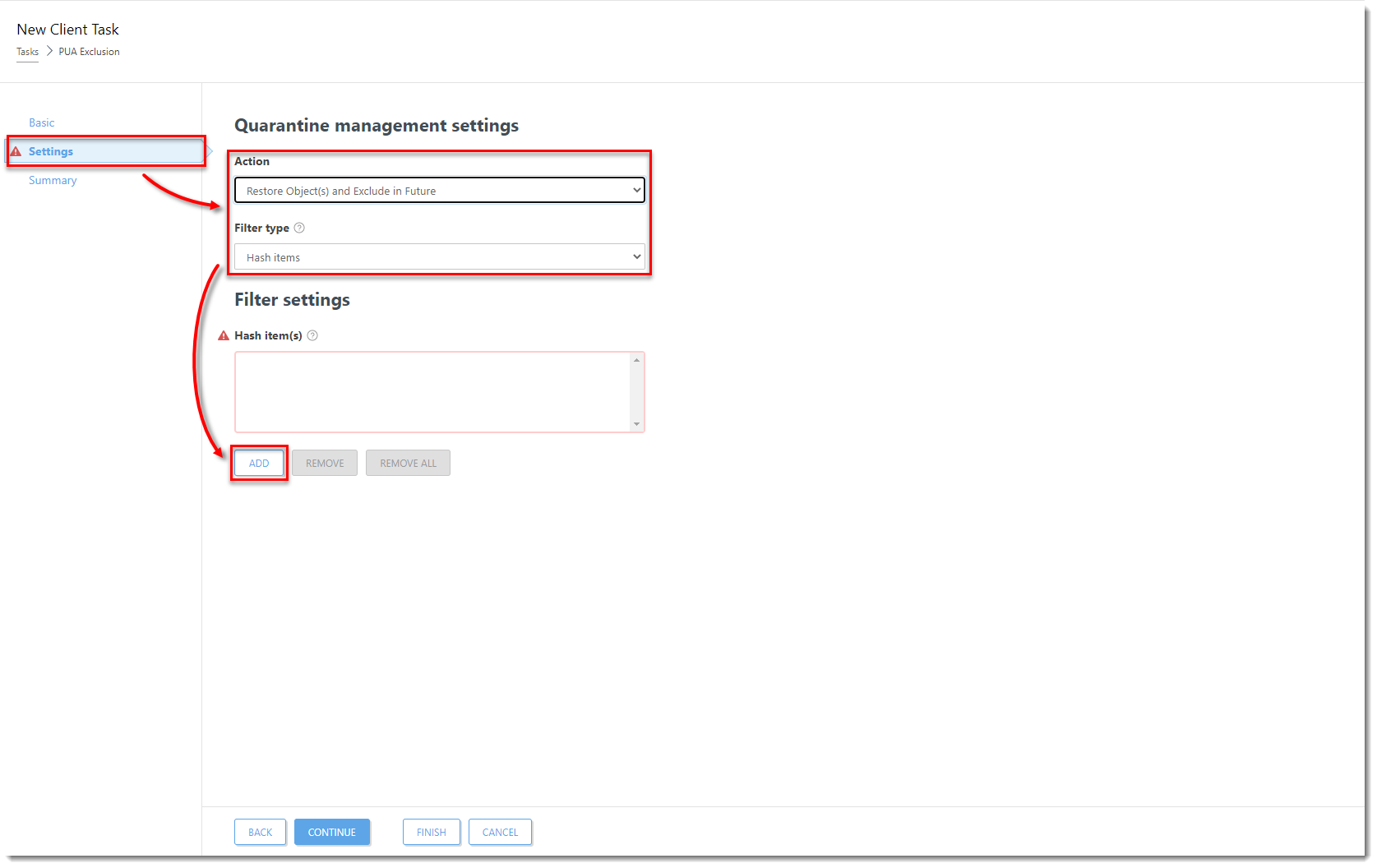
그림 1-4
이미지를 클릭하면 새 창에서 크게 볼 수 있습니다 -
제외를 생성하려는 PUA 옆의 확인란을 선택하고 확인을 클릭합니다.
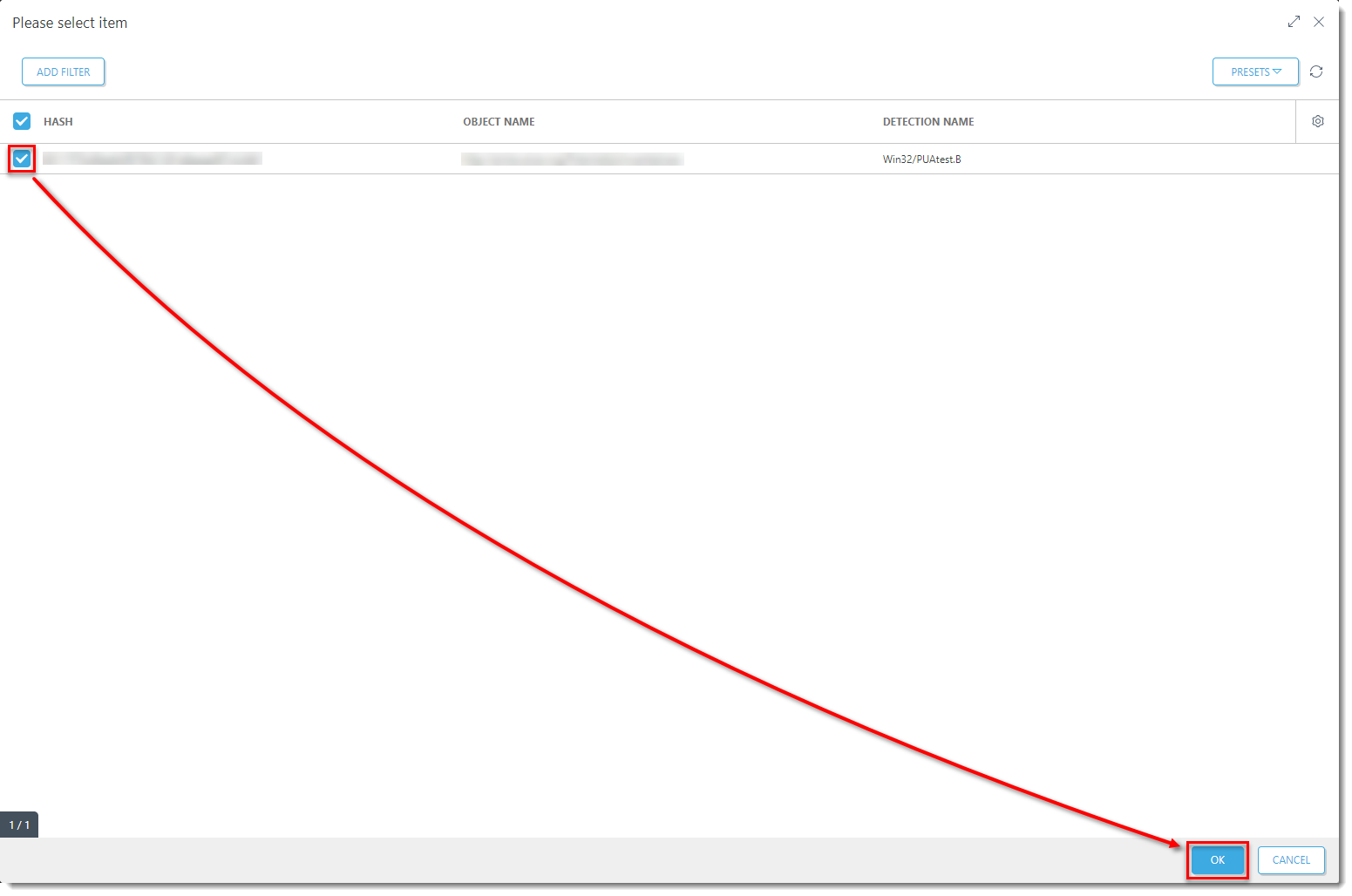
그림 1-5
이미지를 클릭하면 새 창에서 크게 볼 수 있습니다 -
마침을 클릭하여 작업을 완료하고 이 클라이언트 작업에 대한 트리거 만들기를 클릭합니다.
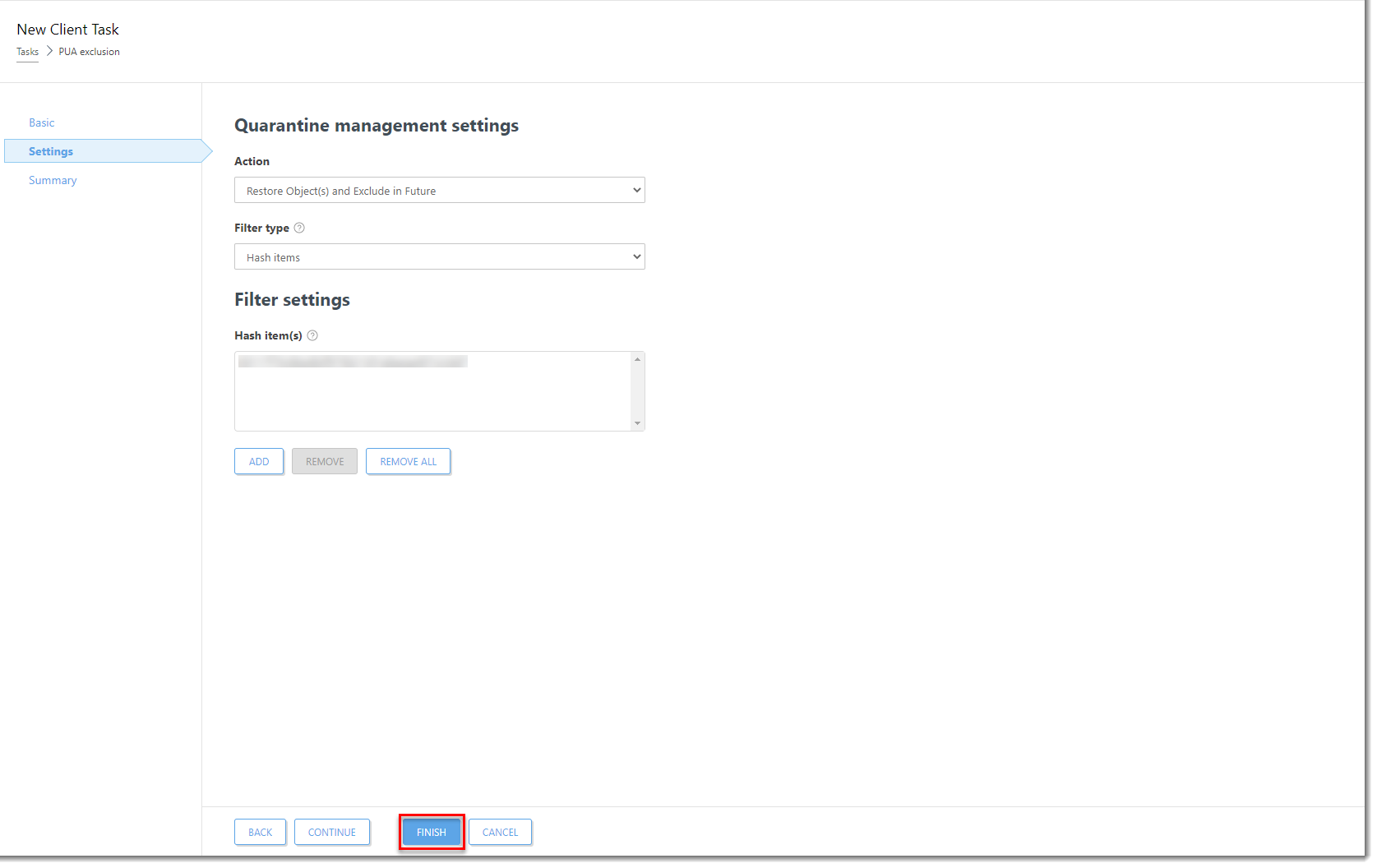
그림 1-6
이미지를 클릭하면 새 창에서 크게 볼 수 있습니다 -
클라이언트 시스템에서 Windows ESET 엔드포인트 제품의 기본 프로그램 창을 엽니다. 키보드에서 F5 키를 눌러 고급 설정을 엽니다.
-
탐지 엔진을 클릭하고 제외를 확장한 다음 탐지 제외 옆의 편집을 클릭합니다. 이제 PUA가 제외 목록에 제외로 나열됩니다.
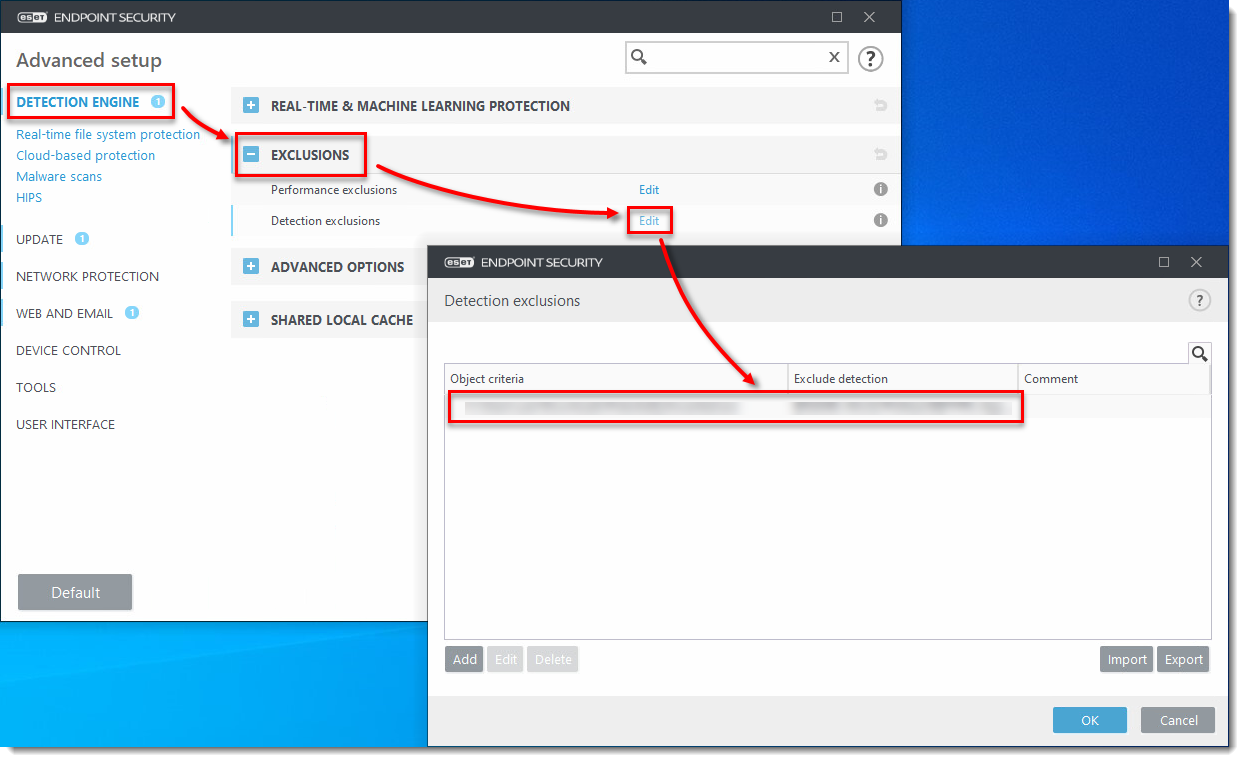
그림 1-7
이미지를 클릭하면 새 창에서 크게 볼 수 있습니다 -
ESET PROTECT 온프레미스 웹 콘솔에서 컴퓨터를 클릭하고 클라이언트 컴퓨터를 선택한 후 동작 → 세부 정보 표시를 클릭합니다.
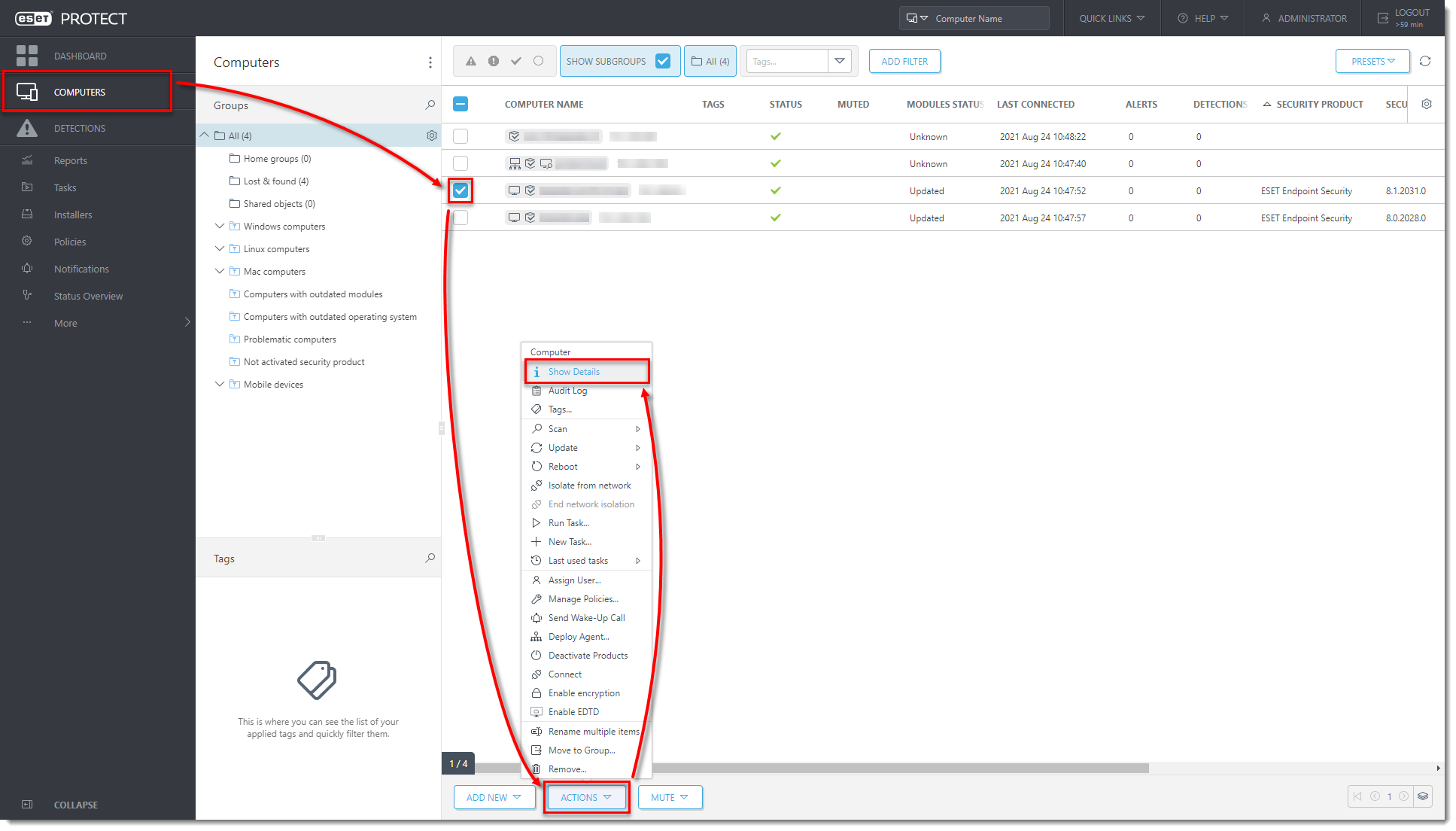
그림 1-8
새 창에서 크게 보려면 이미지를 클릭합니다 -
구성 요청을 누르십시오. 구성이 열리면 보안 제품 → 구성 열기를 클릭합니다.
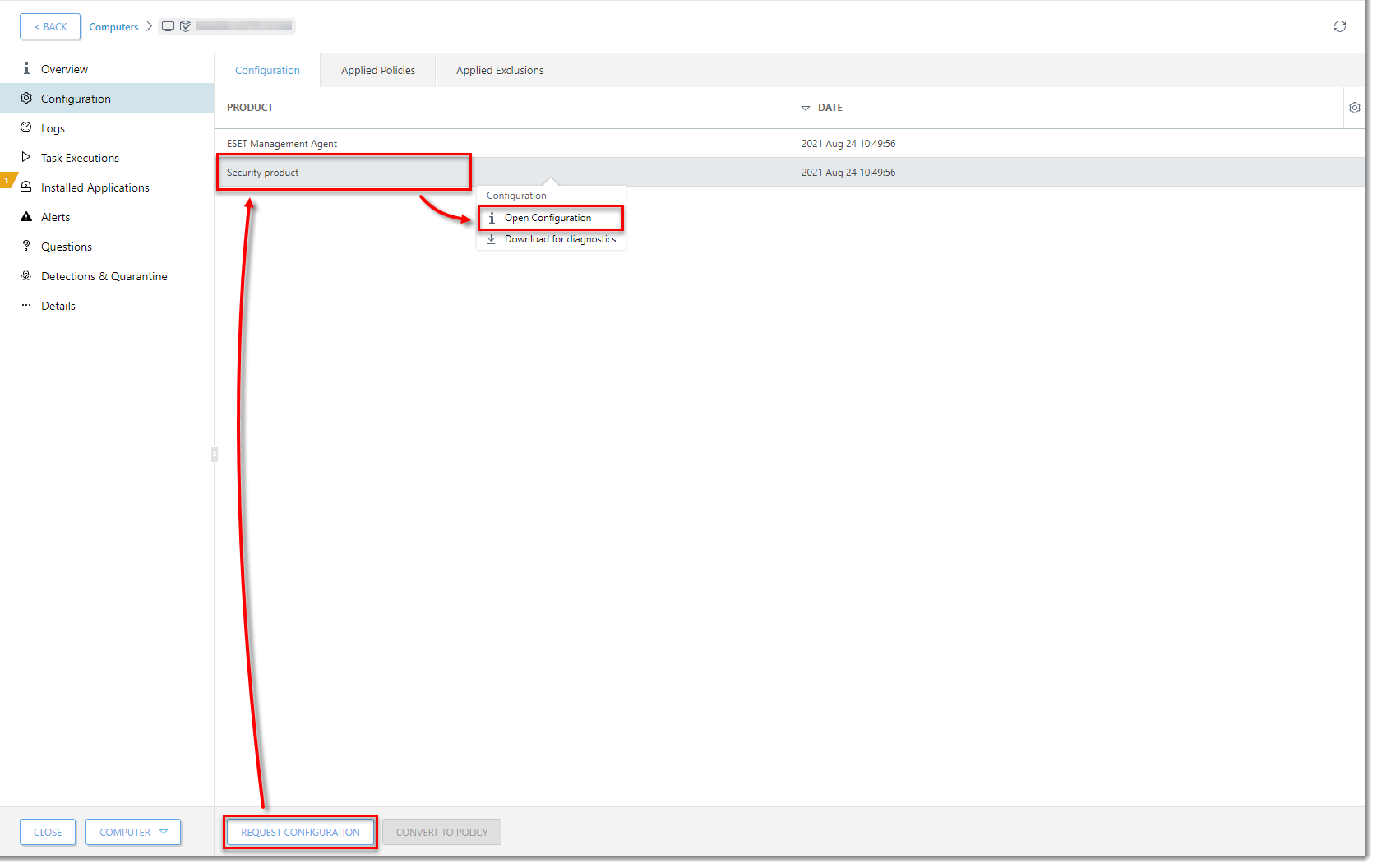
그림 1-9
새 창에서 크게 보려면 이미지를 클릭합니다 -
정책으로 변환을 클릭합니다.
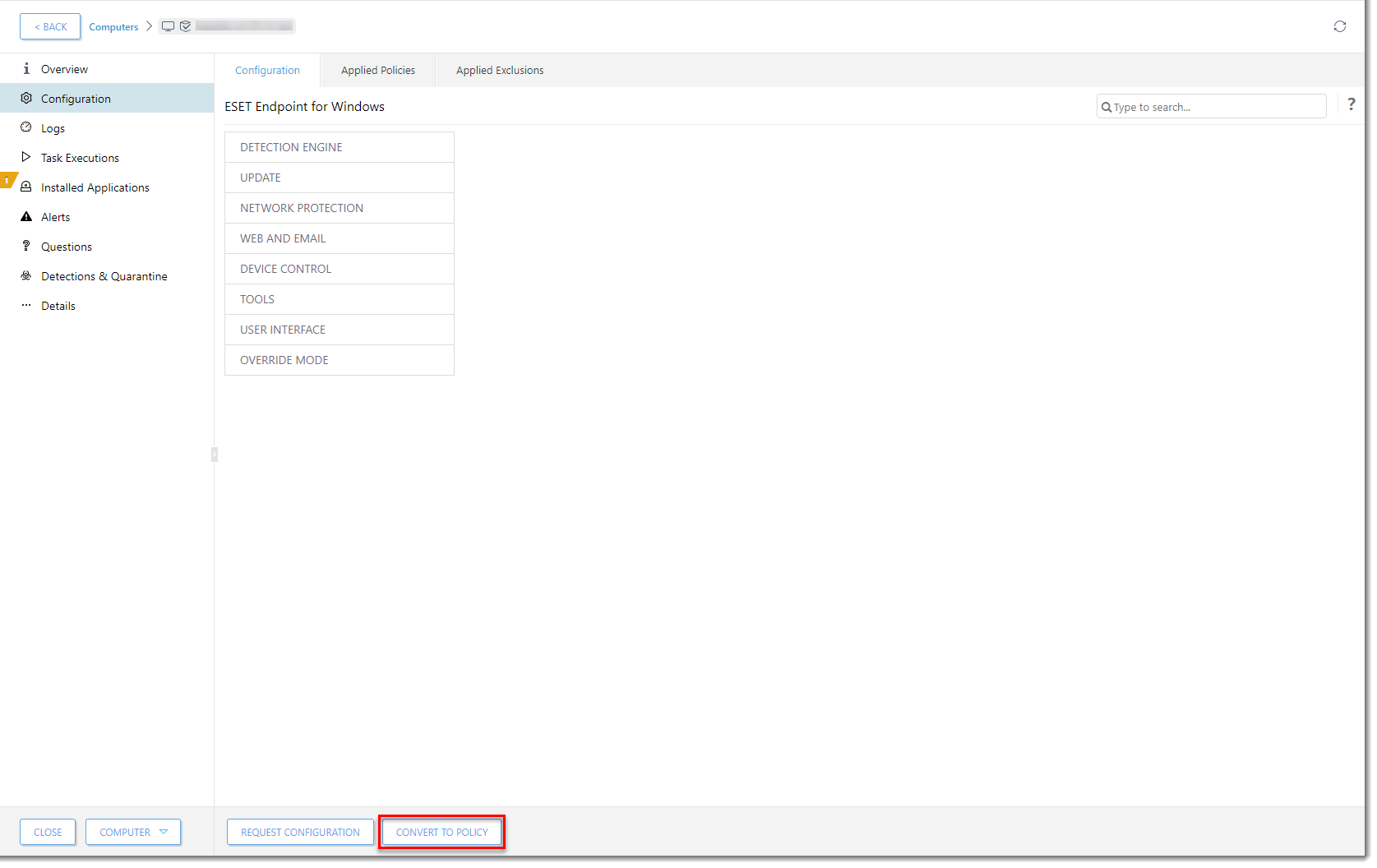
그림 1-10
이미지를 클릭하면 새 창에서 크게 볼 수 있습니다 -
이름 필드에 정책의 이름을 입력하고 마침을 클릭합니다. 이제 이 PUA가 제외된 정책을 모든 클라이언트 컴퓨터에서 사용할 수 있습니다.
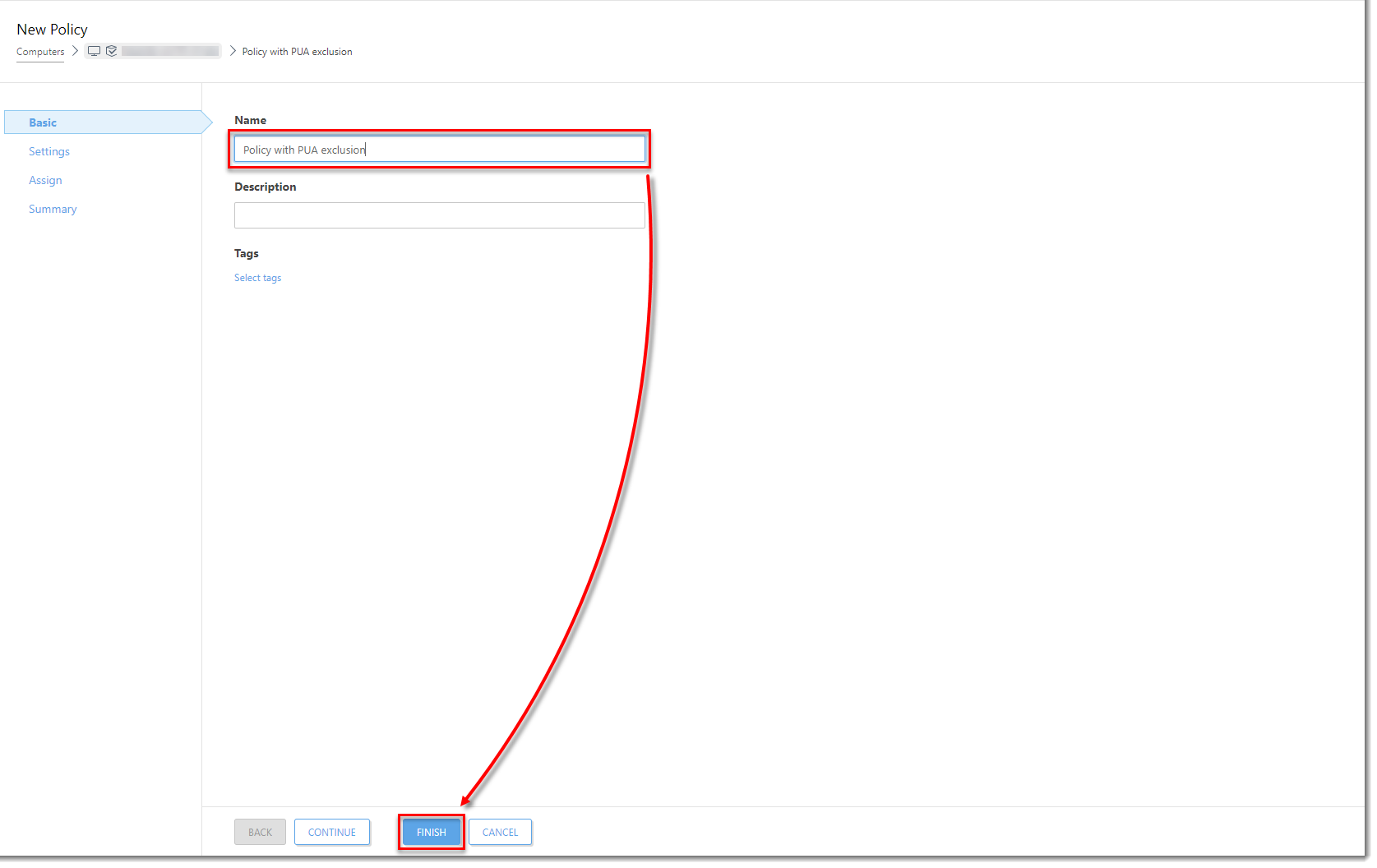
그림 1-11
이미지를 클릭하면 새 창에서 크게 볼 수 있습니다